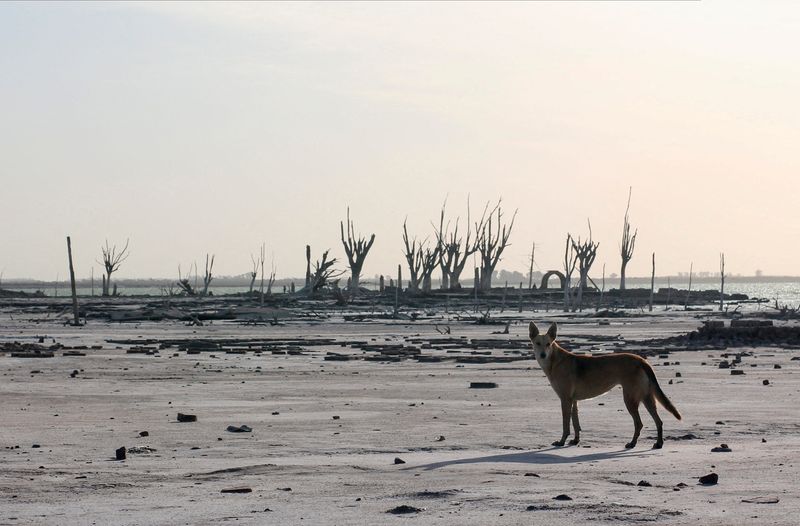By Walter Bianchi and Jorge Otaola
BUENOS AIRES (Reuters) – Argentina’s slow-and-steady currency devaluation plan is coming under rising pressure as a historic drought pummels exports of cash crops soy and corn, draining the country’s reserves of dollars needed to prop up the embattled peso.
The South American country controls its official peso-dollar exchange rate with regular currency interventions, but the cost of doing so is rising, with $1.2 billion of hard currency sold in March alone, data from traders show
The drought – hitting dollar incomes – is now raising the specter of a faster devaluation, which the government is desperate to avoid ahead of general elections in October, wary of pumping up annual inflation already running at 102.5%.
“It strains the exchange plan the government is trying to implement with progressive devaluation, the alternative to avoid a sharp devaluation shock,” said Santiago Manoukian, economist at consultancy Ecolatina.
“It is the Achilles heel of the government’s strategy.”
The government has contended with flourishing parallel FX markets since capital controls were imposed in 2019. Dollars trade at around twice the price they do at the official exchange rate with even banks offering openly offering unofficial rates.
SOY, MALBEC DOLLARS
To deal with the distortions, the government has at times rolled out its own parallel rates for specific sectors, including a “soy dollar” for grains exporters and a “Malbec dollar” for wine.
An Economy Ministry source denied to Reuters the possibility of the formalization of official parallel FX rates, while a central bank spokesman declined to comment on the topic.
Local economist Gustavo Ber said the “daily bleeding” of reserves was a rising concern, with traders closely watching what happened with the peso crawling-peg.
“People are waiting for an acceleration to align it with the interest rate (at 78%) and inflation, although the government could be inclined to keep holding off so as not to add more pressure to prices,” he said.
The rising pressure on the currency has seen dollars trade at 400 pesos per dollar in parallel markets, compared to 205 pesos at the official rate.
The decline in reserves has also raised fears about Argentina’s ability to make repayments on large foreign debts, including with the International Monetary Fund (IMF), which struck a $44 billion deal with the country last year.
Argentina is seeking to ease reserve targets with the IMF and will delay two repayments due this week until March 31, the Washington-based lender confirmed on Tuesday.
Maximiliano Donzelli, analyst at IOL, said a sharp devaluation remained unlikely despite the growing pressure, with temporary and targeted parallel rates more likely.
“An aggressive devaluation will not occur in the coming months,” he said.
(Reporting by Walter Bianchi and Jorge Otaola)

